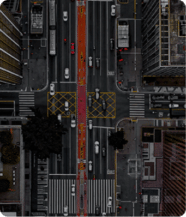
Blog
The Insurance Digital Darwinian Shift: Digital Insurance 2.0
Brian Solis, a digital analyst and anthropologist, studies the effects of disruptive technology on business and society, calling it “digital Darwinism”. Darwinism, as noted in the Merriam Webster dictionary is “a theory that inherent dynamic forces allow only the fittest persons or organizations to prosper in a competitive environment or situation.” Solis borrowed Darwinism to describe how organizations adapt to changing customer behavior (anthropological view) and rapidly changing technology through digital transformation. As Solis notes in various articles, the effect of digital Darwinism on business is real, and it’s enlivened though evolutionary changes in people in their views, expectations, and decision making.
And we are seeing it rapidly unfold in the insurance industry.
The pace of disruption and dramatic changes are truly evident when we look at Majesco’s first Future Trends report from February 2016 to the second one in March 2017…and now in 2018. This year’s Future Trends report takes a deeper look at the current state of insurance disruptors across people, technology and market boundaries, and how they are pressuring insurers to adapt — pushing them out of their traditional orbits and toward new models and opportunities — “digital Darwinism” — to Digital Insurance 2.0.
The Insurance Darwinian Shift
Players across the entire range of insurance industry segments are being confronted with permanent changes in customer behavior, different employee expectations, rapidly evolving digital technology and a quickening renaissance of the business environment. Majesco’s consumer and SMB surveys show that customers seek “ease in doing business” across the research, purchase and service aspects of insurance. In addition, they are rapidly adapting to the digital age and they have a rising interest in new, innovative products and business models emerging in the market, posing a threat to existing insurers.
These innovative products and business models, from both existing and new entrants, are rewriting the rules of business, and with it, redesigning organizational and business model structures, and how products and services are defined and delivered. They are using digital technology and data and analytics to better understand, underwrite and service their customers with tailored products and services that are more personalized than ever and meet the unmet or under-met needs of a rapidly changing market.
If an insurer hasn’t yet wrestled with the necessity for change, this is a Darwinian moment for them to understand the shifting market, adapt and swiftly take action. Opportunities abound for incumbent insurers who move quickly and decisively to Digital Insurance 2.0. But those who do not act, or who take a “wait and see” view will likely find themselves challenged to remain competitive and relevant … and just like Darwinian theory, face the threat of extinction.
Survival of the Most Adaptive
Today’s business environment is characterized by constant disruption, heavy competition and growing market and customer demands. We are entering uncharted waters. The rise of Digital Insurance 2.0 is simultaneously one of the greatest opportunities, challenges and threats to insurers operating in Insurance 1.0. Digital Insurance 2.0 requires an outside-in approach that begins with entrepreneurial thinking.
New startups like Lemonade, Slice, Zhong An, Haven Life, Bought by Many, Neos, and others, are embarking on Digital Insurance 2.0 business models using digital platform capabilities and ecosystems that exploit untapped markets and address under- or unmet needs that strengthen customer relationships. Insurance incumbents with outdated Insurance 1.0 business models and technology infrastructure are increasingly at a huge disadvantage.
New business models are serving different markets, have different products and services and use different strategies. Yet all of them are rapidly changing the business assumptions and go-to-market approaches for insurance through the use of a platform solution as the catalyst. While customer demographics and expectations, emerging technologies and data, and InsurTech have had a majority of the focus, one area that has been a catalyst for these companies to shift to Digital Insurance 2.0 is platform solutions.
Platform solutions provide these innovative companies speed to value, unique customer engagement, a test and learn platform for minimal viable products and value-aligned optimized costs. Their platform solutions also catalyze digital technologies and processes, AI/Cognitive, cloud computing and an ecosystem, into a powerful new force to expand capabilities and reach well beyond those of the traditional Insurance 1.0 model. They are creating new paths, energizing the market and lowering operational costs.
These companies are rapidly adapting to the changing market landscape and represent the first wave of Digital Insurance 2.0, becoming the catalysts for a new generation of insurance.
Digital Adaptation is Just Beginning
As a result, incumbent insurers must aggressively begin to define their vision and path to Digital Insurance 2.0, leveraging today’s catalytic lever, platform solutions. Each organization undertaking this path will evolve differently; but being open to operationalize around its promise as a new business model paradigm acknowledges the role innovation will continue to play as insurers encounter future insurance ecosystems. And the time for plans, preparation, and execution is now — recognizing that the gap is widening between Insurance 1.0 and Digital Insurance 2.0 and the timeframe to effectively respond is closing.
In today’s world, change and the competitive environment is continuing to intensify and accelerate. Insurers taking a “wait and see” or “fast follower” approach must realize that Digital Insurance 2.0 is just the beginning. The catalytic effect of platform solutions in the shift to Digital Insurance 2.0 is rapidly evolving, gaining momentum and laying the groundwork for future reactions. Will the next catalyst be blockchain or some other trend that will propel us toward Insurance 3.0?
While it took 20+ years to transition from Insurance 1.0 to Digital Insurance 2.0, the pace of change will likely drive Insurance 3.0 to emerge within the next 5-10 years. What Insurance 3.0 entails is yet to be seen. But, for insurers still in Insurance 1.0, getting from there to Insurance 3.0 will likely be insurmountable. As Darwinism asserts, only the fittest will prosper in a competitive environment.
Each and every day, insurers must recommit to Digital Insurance 2.0 business platform and ecosystem strategies and a journey that will enable their next wave of growth and value creation. Insurers’ abilities to adapt and rapidly move to Digital Insurance 2.0 will likely define their future. As such, insurance executives and leaders should ask themselves the following:
- Are we appealing to customers’ motivations, making our processes simple, and creating compelling triggers to act?
- What is our business strategy and how are we incorporating a platform and ecosystem approach?
- In which markets and with what customers will we find our future growth? What will they expect?
- What is our partnership approach today and how will it need to change to extend to a broader ecosystem?
- Is our technology platform the foundation for our growth?
The future is still unfolding. New technologies and ecosystems will continue to emerge. And with those changes, over the next decade, we will likely see the beginnings of Digital Insurance 3.0 emerge. Organizations will need agility to adapt and respond, a keen focus on innovation that encourages experimentation, and a priority on speed to value to succeed, let alone survive.



